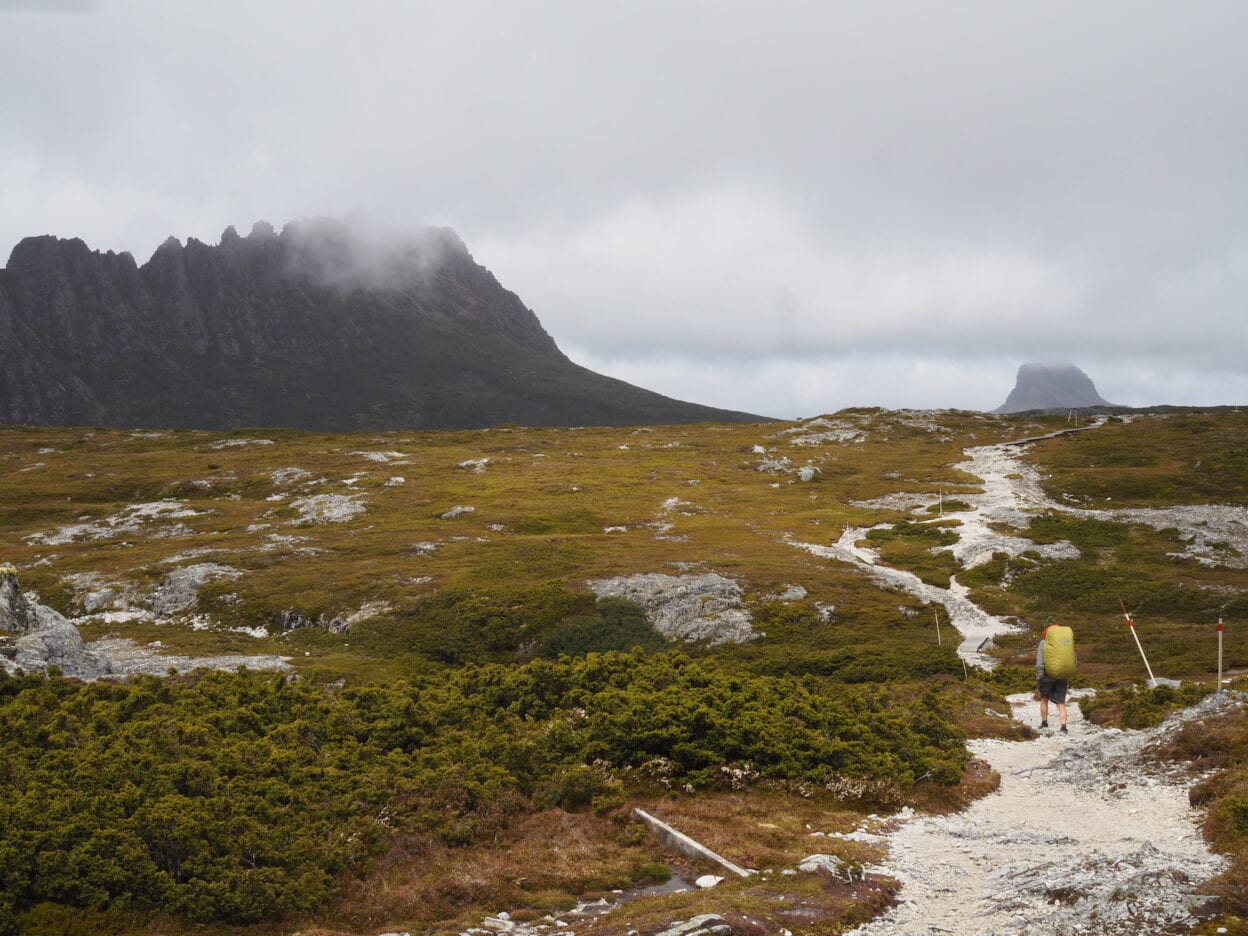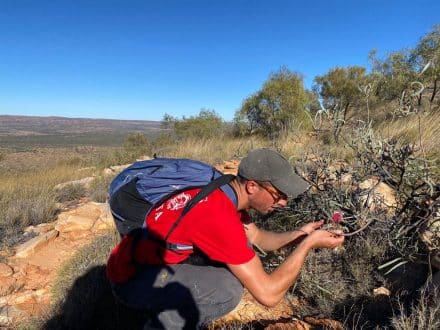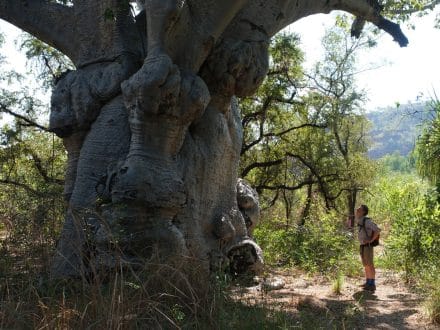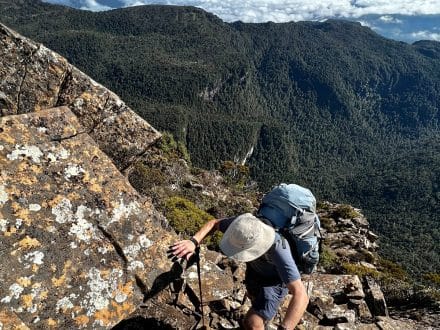The terrain, flora and weather are important factors that make an epic trek, but it is also the guides who add so much to the journey on Tasmania’s iconic Overland Track.
The first day of our hike from Cradle Mountain to Lake Saint Clair commenced at Waldheim Chalet and it was immediately apparent that our guides, Chloe and Annie from Tasmanian Walking Co, were not only exuberant but highly experienced and knowledgeable about the track’s history, plants and wildlife.
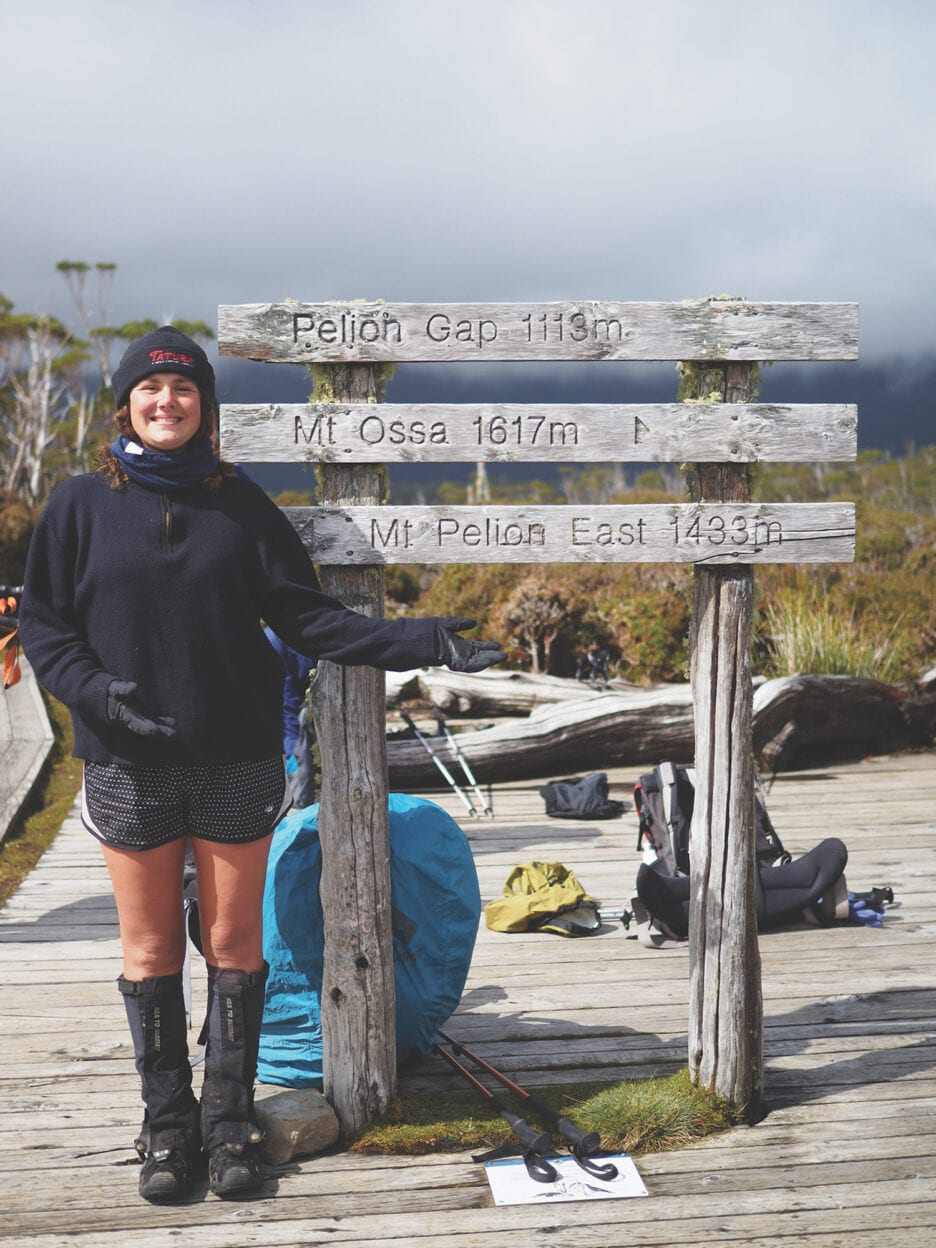
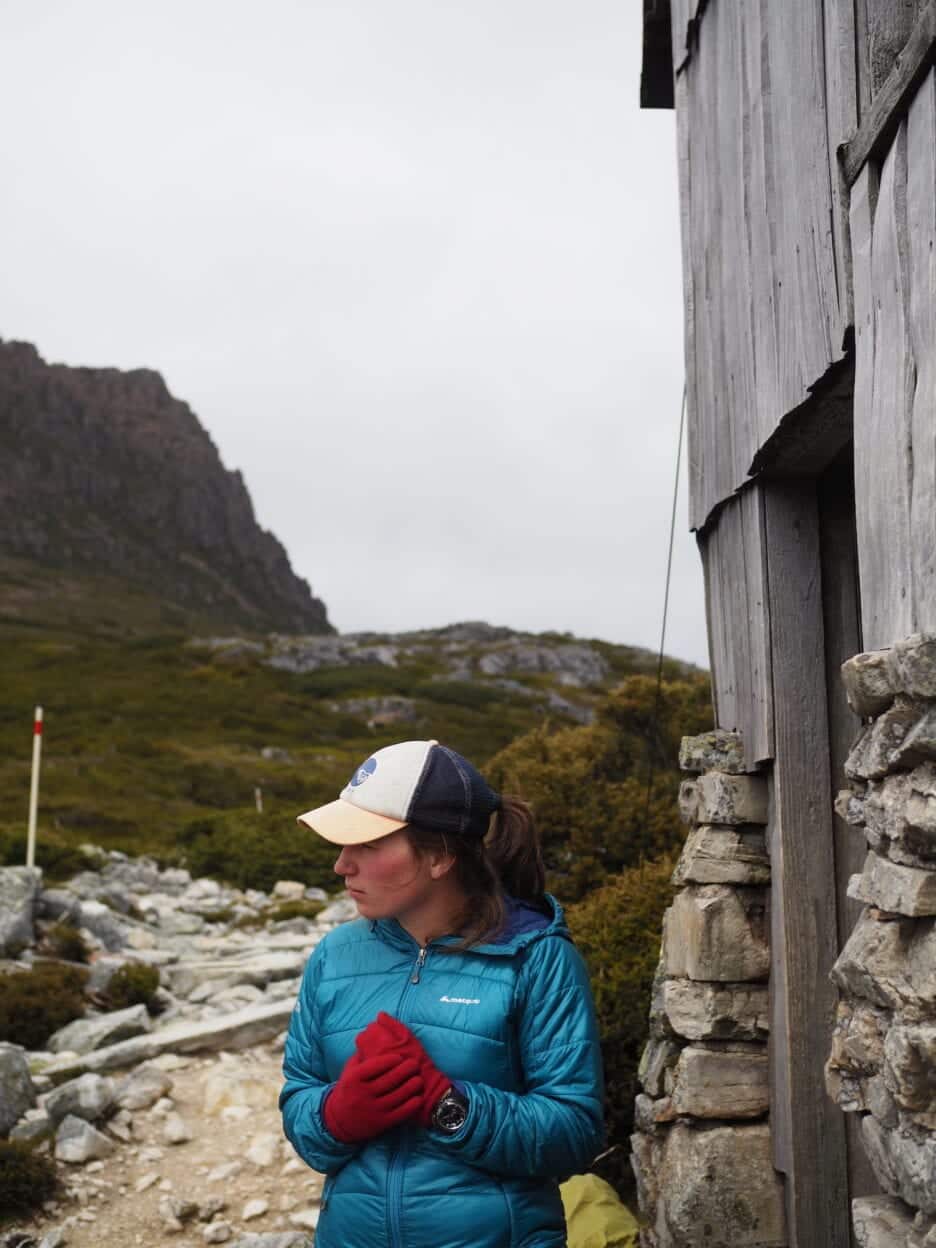
There are so many examples in Tasmania that distinguish it from mainland Australia. The topography and flora grabbed the attention of Austrian, Gustav Weindorfer and with the new love of his life, botanist Kate Cowle, they created Waldheim and pushed for the creation of a scenic reserve. “This must be a national park for the people, for all time,” Gustav proclaimed.
By midday on the first stage our group was lunching at Kitchen Hut, high above the winter snowline, gazing at the glacial carved valleys below Cradle Mountain. Further along the ridge the vista is like nothing seen across Bass Strait. Pandanis border a cushion bush-fringed clearing and beyond stretches the cirque, formed by morainal action. Way below, the dramatic valley of Fury Gorge is revealed in all its fear and loathing.
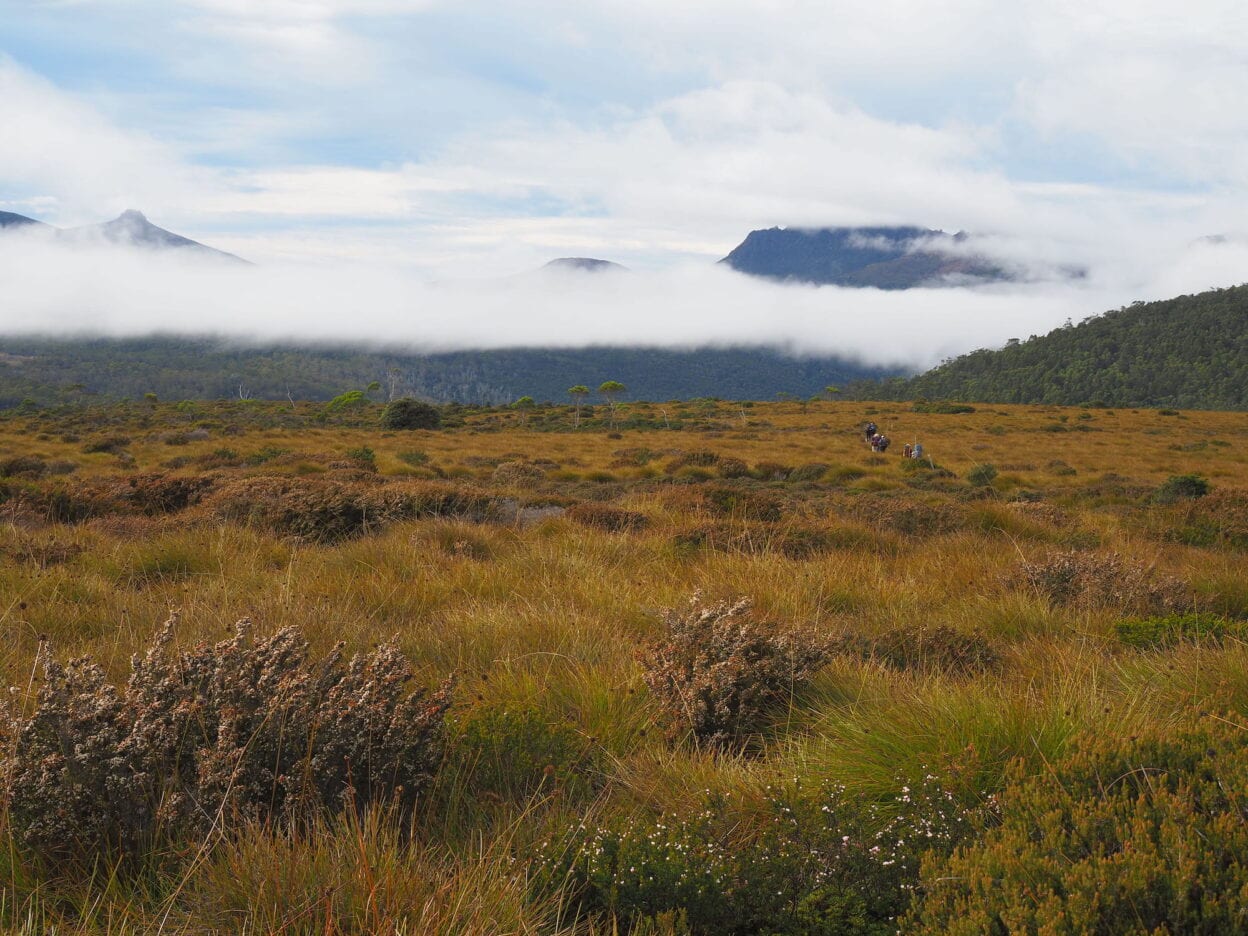
The track can readily be tackled by fit and experienced hikers carrying all their food and camping gear and the rewards are momentous. However, the Cradle Mountain Huts Walk option by Tasmanian Walking Co is sensible for the less hardcore, plus the knowledge imparted by the guides was invaluable.
It was a weary but satisfied group who trudged into Barn Bluff Hut late on the first day to be greeted by a bounty of freshly baked scones, local jams and steaming tea. Day two, if anything, was more spectacular as we skirted Barn Bluff with visibility clear to Mount Ossa, Tasmania’s highest peak. A side tour to Lake Will revealed 800-year-old pencil pines framing a white granitic sand beach on an ancient tarn. These remnants of Gondwanaland are a naturalist’s delight. A pre-lunch refreshing dip in 8 degrees Lake Windermere is a swim that could never be regretted. We meandered on, across button grass moors learning about the practices of the Indigenous Palawa people who would fire the landscape to generate new growth and attract game to their summer hunting grounds. Down we plunged into wet temperate forest to Pine Valley Moor Hut.
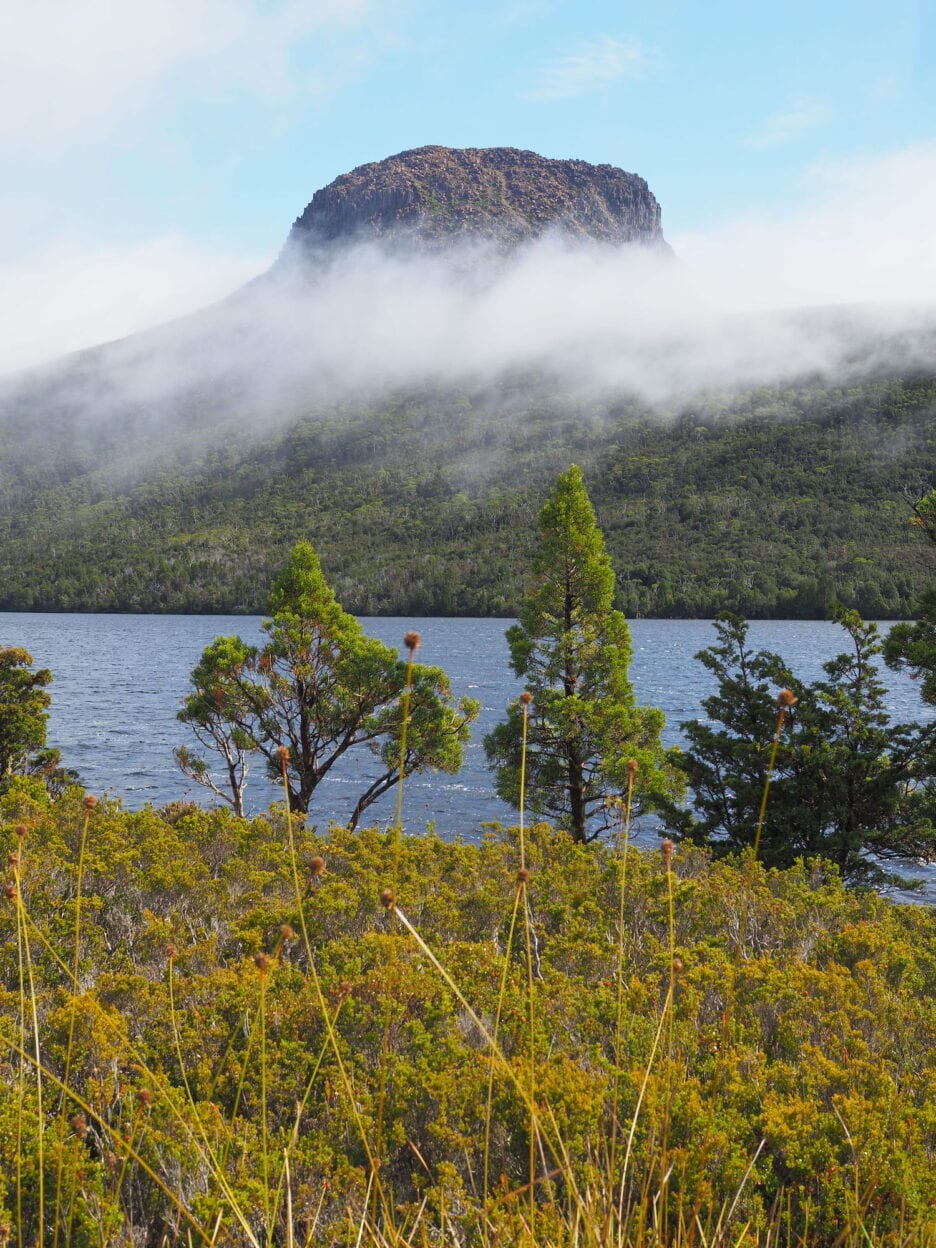
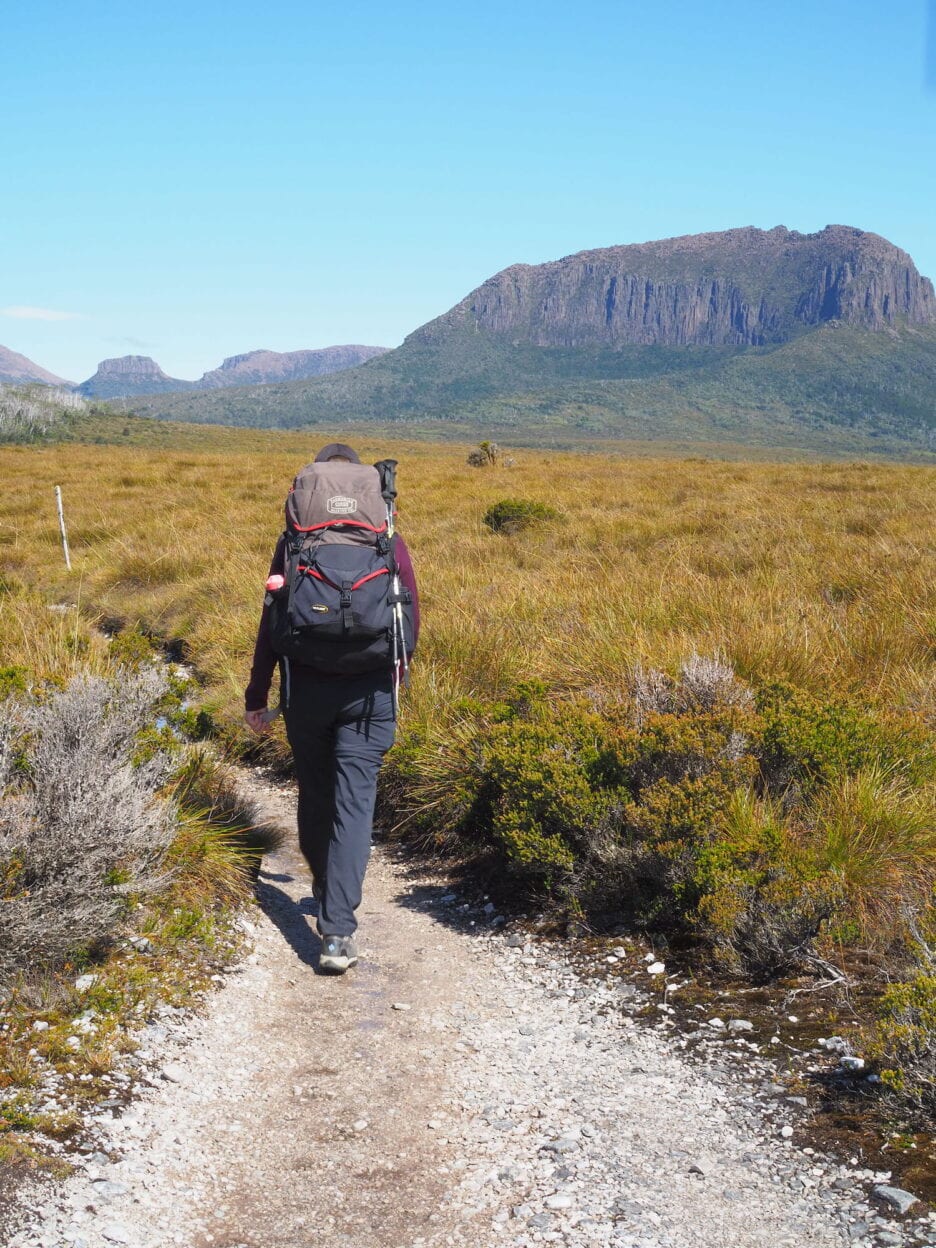
A flaming sunrise revealed a cathedral-like vista as dolerite columns of Mount Oakleigh blazed in the distance. Birdsong reverberated from the stand of beech myrtle as we headed to the lowest point of the track at Frog Flats. Nearby Pelion Plains had seen opportunistic miners in search of tin in the early 1900s, but fortunately the venture proved uneconomical and the region remained protected.
Steady rain set in as we tucked into a feast of mushroom risotto at Kia Ora Hut, undoubtedly serving up the hero view of the trip with Cathedral Mountain towering in the foreground. A crisp dawn revealed moderating conditions and we were soon hiking alongside a roaring Mersey River tributary whilst a dripping forest came alive with birdsong and morning sun. Here in this Tolkien-esque world another love story was revealed. One of only half a dozen hybrid trees created by cross-fertilisation between a King Billy pine and a pencil pine grows on the bank of a mountain brook. We crested Pelion Gap and bravely tackled a side climb up Mount Ossa as far as the balcony with views to Castle Crag all the way south to Mount Olympus.
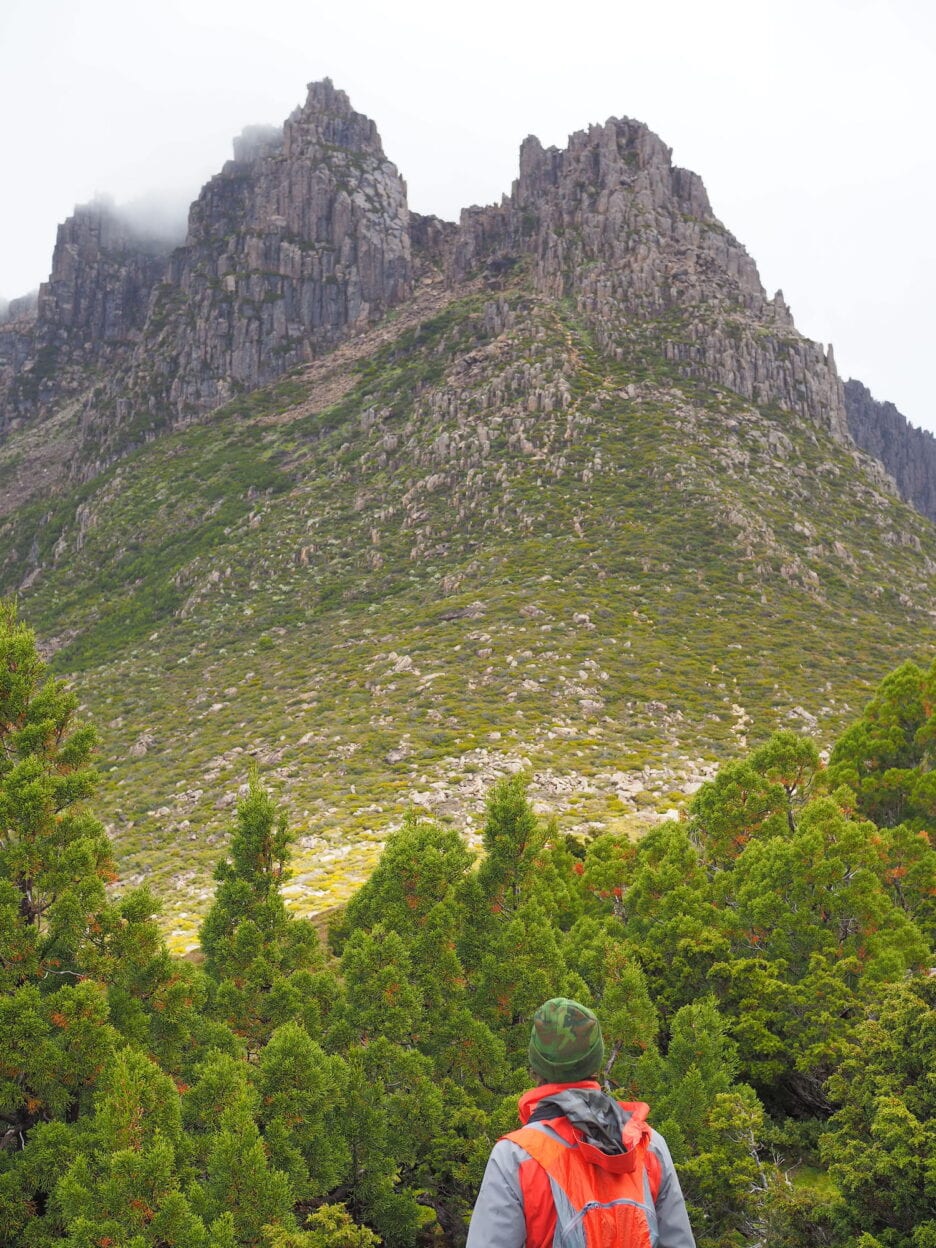
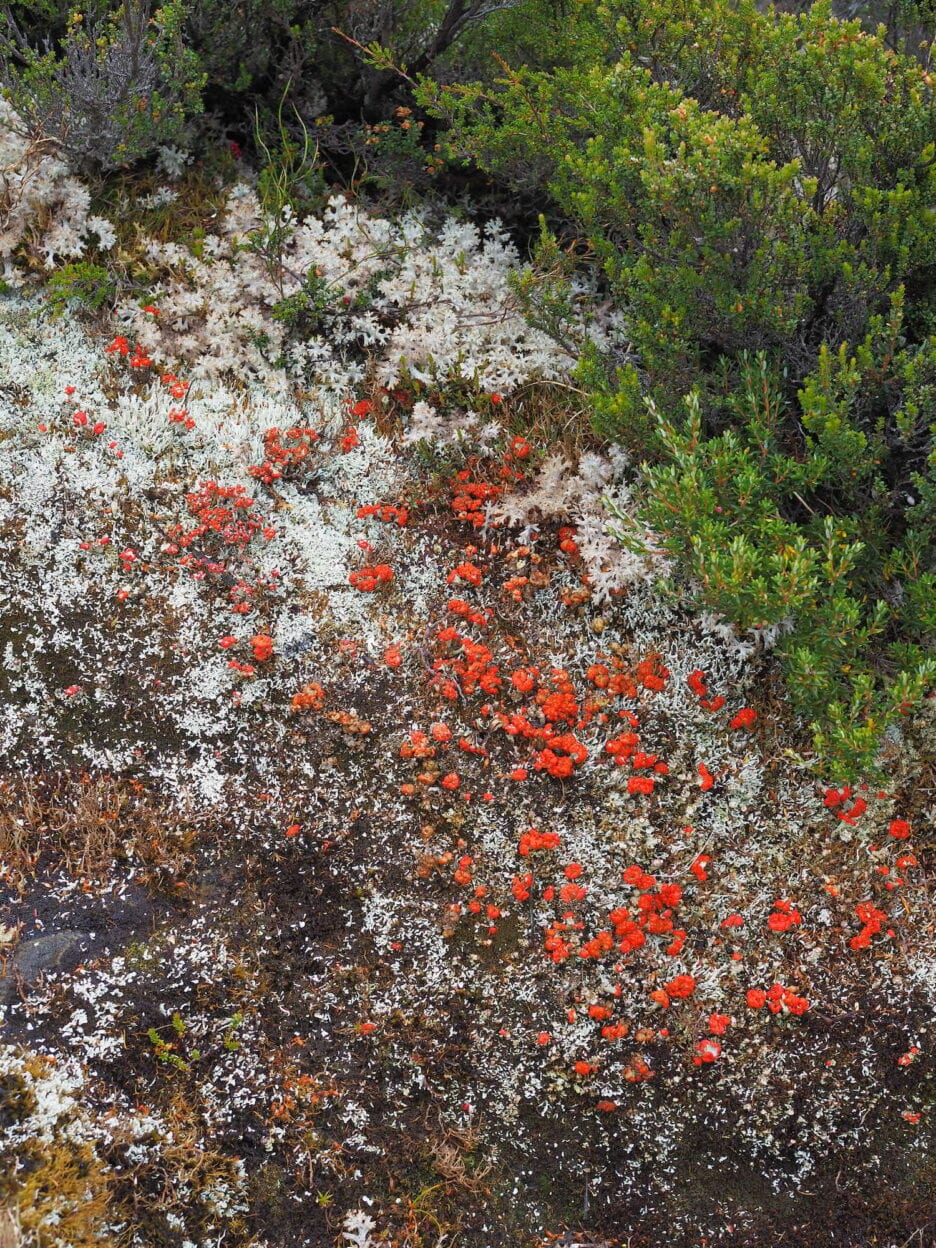
Leaving the hut on the penultimate day we trekked on to Du Cane Hut, built by trapper-cum-guide Paddy Hartnett and the oldest hut in the park. From here, it was a meditative walk through a fecund rainforest with vibrant fungi nestled below rotting logs. Further on we climbed towards Du Cane Gap on a balmy autumnal afternoon surrounded by towering, gum-topped stringybarks. The flora changed immediately on the south-facing slope as we flanked Falling Mountain. We descended once again into an emerald world of running streams, lichen, beech and sassafras on the way to Windy Ridge Hut for the final celebratory evening before heading to Lake Saint Clair.
This is a seminal trek with its roots in a romance. A hike in the care of guides with a love for this land and its features. A journey with people who have a passion for the natural environment. A trip that will enhance a lust for the wilderness and all it offers.
